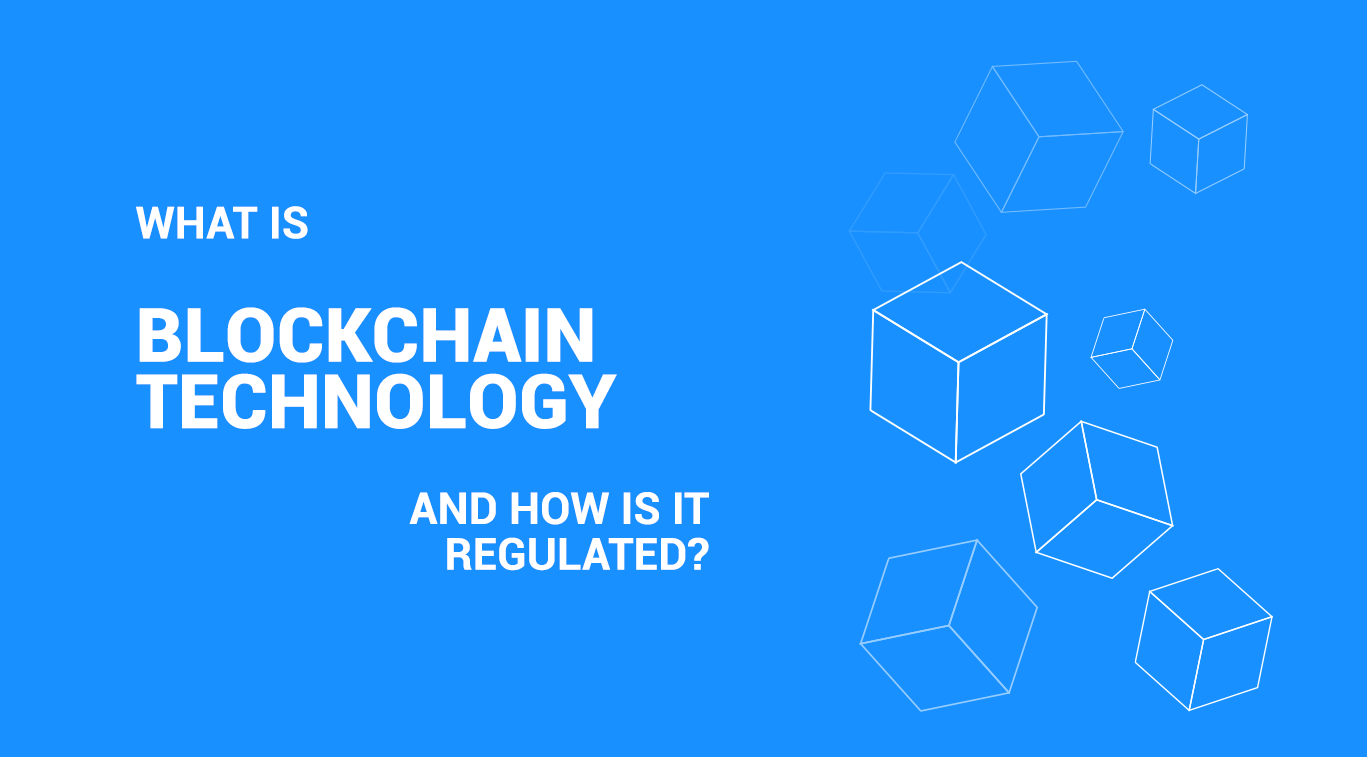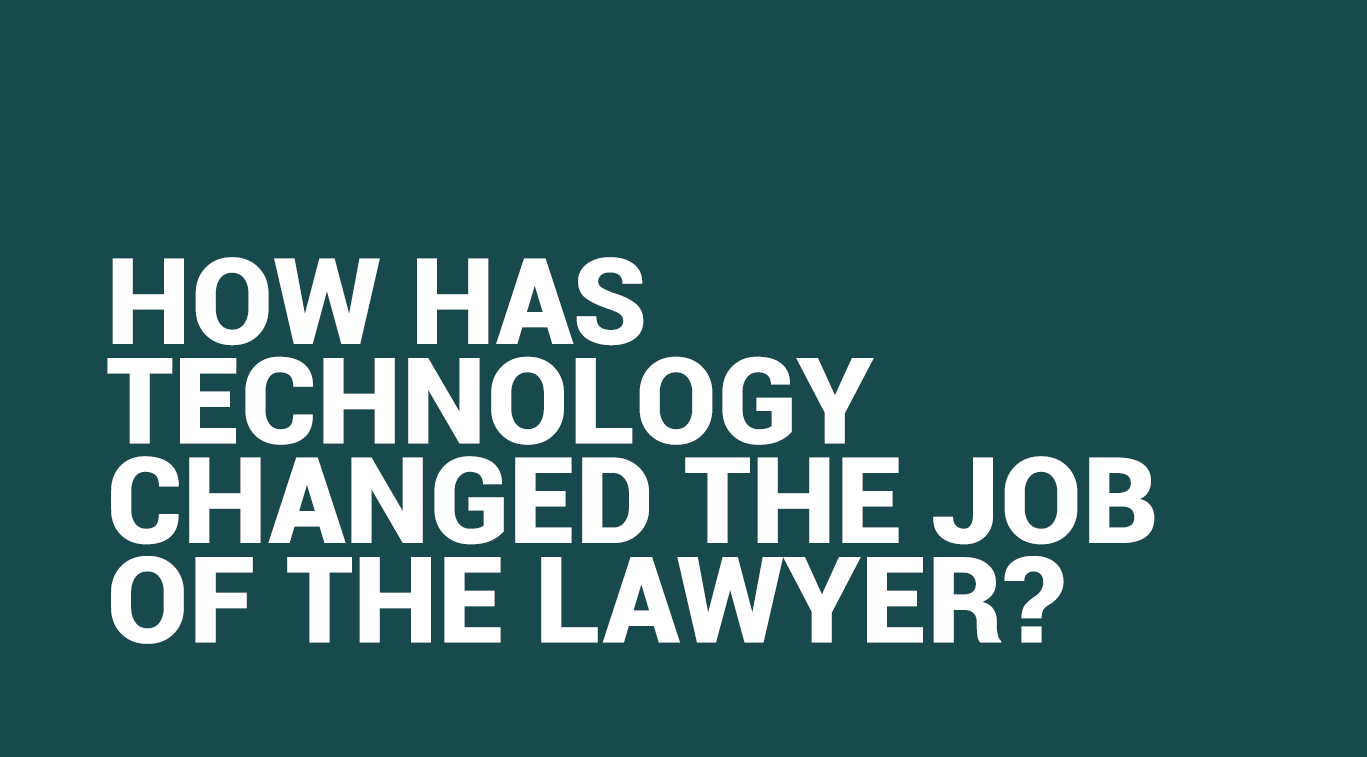What is Blockhain Technology and How is it Regulated?

Written by Shrisha Sapkota
Blogger

Introduction to Blockchain technology
The term blockchain first appeared in 2008 written by an anonymous developer or group of developers known as Satoshi Nakamoto[1]. As its etymology indicates, a blockchain is a chain of blocks[2]. In a blockchain, data is kept together into units called blocks, which are connected through an algorithm and distributed to a peer network of multiple trusted sources[3]. An algorithm in a blockchain is a sequence of instructions that brings the informational content of many blockchain-data structures together with cryptography and security technologies[4].
A blockchain is a peer-to-peer system with no central authority managing data flow[5]. It has a large distributed network of independent users and the computers that make up the network are spread all across the world. These computers are often referred to as full nodes[6]. Each node contains a complete record of all the transactions that were ever recorded in that blockchain[7].
Hence, it is like a global spreadsheet or ledger, which leverages the resources of a large peer-to-peer network to verify and approve each transaction without a central database to hack. Thus, it is also known as a distributed ledger which refers to the technological infrastructure and protocols that allow simultaneous access, validation and record updating in an immutable manner across a network that’s spread across multiple entities or locations.[8]
Types of blockchains
Blockchains can be classified into three main categories and the distinction between them is driven by two main criteria: the network type and the implemented access control model, in other words, who is allowed to join the peer-to-peer network (run a node) and access the blockchain records[9]. The three types of blockchains are as follows[10]
Public blockchains
In a public blockchain, everyone can join the network, write and read data (under consensus protocol)[11]. They can see all the transactions, can expect their transaction to appear on the ledger and can participate in the consensus protocols[12]. A consensus process is a procedure through which all the peers of the blockchain network reach a common agreement about the present state of the distributed ledger[13]. Public blockchains are also described as permissionless primarily because anyone may create blocks without needing permission from an authority[14]. This model is a true representation of the original blockchains used in cryptocurrencies such as Bitcoin, Ethereum, etc[15].
Private blockchains:
The private and permissioned blockchains can run on a private network, such as an intranet or a virtual private network (VPN), and an administrator needs to grant permission to individuals wanting to maintain a node[16]. They do not have a global public network[17]. These blockchains are generally used inside a company and only specific members are allowed to access them and carry out transactions[18]. Corda is a popular permissioned blockchain, which is a consortium of banks for use by regulated financial institutions but with broad applicability[19].
Federated/Hybrid Blockchains:
These blockchains are partly private and permissioned blockchain networks operated by known entities such as stakeholders of a given industry regrouped in a consortium or exploiting a shared platform[20]. The network participants have control over who can join the network and who can participate in the consensus process of the blockchain[21]. Thus, only a limited number of nodes are permitted to participate in the consensus process [22]. For instance, in a group of twenty pharmaceutical companies, it could be imagined that for a block to be valid, fifteen of them would have to agree on it [23]. Nevertheless, the access to the blockchain can be public or restricted to the participants[24]. Examples of technologies using such blockchain are Tendermint, Hyperledger Fabric, etc[25].
Applications of blockchain technology
Blockchain-based applications are expected to reach $10.6 billion in revenue by 2023[26]. Smart contracts are programs stored on a blockchain that is used to automate the execution of an agreement which enables transactions in situations devoid of human and institutional trust, lowers transaction costs, reduces counterparty risk and interpretative uncertainty[27]. These contracts promise to transform the business world as they are capable of executing and securing complex business transactions in a matter of seconds. However, they haven’t been used widely due to the current transaction habits of businesses and legislations that are not suitable for smart contracts[28].
Blockchains are widely used in various sectors, such as land and property
registry, asset ownership, insurance, health, governance, security trading, international money transfer, the recording of intellectual property rights and copyrights as well as voting[29]. Blockchain-enabled tools have been used to combat the COVID-19 pandemic, such as an identity management system for contact tracing in South Korea,[30] Dubai and Georgia have implemented permissioned blockchain land registries where the blockchains are replacing central databases and storing records to eliminate operating costs[31].
Since 2018, twenty-nine countries and the European Commission have joined forces to form the European Blockchain Partnership (EBP) to build a European Blockchain Services Infrastructure (EBSI) with the vision is to leverage blockchain to the creation of cross-border services for public administrations and their ecosystems to verify the information and make services trustworthy[32].
Criticism of Blockchain technology
Businesses and stakeholders are unclear about the way blockchain technology operates and its short and long-term market development potential[33]. The perceived immaturity of blockchain technology creates a barrier for businesses to adopt it[34]. The early adoption has risks such as incompatible blockchain models, poor interoperability, high upfront costs for “mining” and unclear running costs of the blockchain, which has restricted its widespread adoption[35]. Moreover, the decentralisation of blockchains or removal of the central point of access indeed burdens the determination of jurisdiction and the imposition of legal obligations and responsibility[36].
The immutability of a blockchain doesn’t inherently, automatically or magically make data truthful — it can certify the time, the parties and the object are included in a “block,” but it cannot guarantee the legal validity, the veracity or the correctness of the content[37]. Furthermore, since blockchain achieves its security by public-key cryptography, if one loses one’s key to the blockchain ledger holding one’s financial or real estate asset, then this will result in the permanent loss of such assets[38]. Blockchain also promises to eradicate the need for third-party intermediaries, but for the time being, more intermediaries have been added through the development of blockchain technology than removed[39]. For example, centralised exchanges have emerged to allow people to buy and sell crypto assets in a convenient manner; smart contracts necessitate oracles, a new class of intermediaries, whereas miners and mining pools can also be considered as new intermediaries[40]. Similarly, although blockchain promises to change the future of cross-border payments if fiat money is moved through a financial services agency such as Western Union or the banking system, there is only one exchange of currencies[41]. However, using cryptocurrencies, there are now two exchanges: fiat to crypto, then crypto to fiat[42]. More exchanges mean more steps, complexity and cost[43]. Cryptocurrencies also consume a huge amount of energy, mainly for mining. According to research conducted by the U.K.-based energy comparison tariff service called PowerCompare, the average electricity used to mine bitcoin this year has surpassed the annual energy usage of around a hundred fifty-nine countries[44]. In the context of blockchains, the amount of energy consumed has environmental and economic ramifications which may be regarded as disproportionate when compared to the currencies’ actual utility[45]. Additionally, the prices of cryptocurrencies are volatile with no established methods to value a cryptocurrency which differs from traditional financial markets where pricing models help to constrain prices to within broadly understood limits[46]. The rapid growth in cryptocurrencies and the anonymity that they provide users has fostered their use in illegal trades, such as drugs, hacks and thefts, potential to fund terrorism, launder money, tax evasions and avoid capital controls[47]. It is estimated that around seventy-six billion dollars of illegal activity per year involve bitcoin and forty-six per cent of bitcoin transactions conducted between January 2009 and April 2017 were for illegal activity[48].
Attempts to regulation blockchain technology worldwide
The vast potential of blockchain applications makes it challenging to apply existing legal frameworks and definitions[49]. Over the past few years, many jurisdictions have developed different approaches to regulate blockchains. Usually, a country has three paths to regulate blockchain: (i) it can ban and/or try to restrict the use of blockchain; (ii) it can decide not to implement any regulation; or (iii) it can provide clarity and a regulatory framework regarding how such activities can operate within the jurisdiction[50].
For example, while some countries such as China, Russia, Vietnam and Colombia have banned cryptocurrencies and outlawed their use and investment,[51] El Salvador has become the first country in the world to officially classify Bitcoin as a legal currency in September 2021[52]. The U.S seems positive about the use of blockchain, but the federal government has not exercised its constitutional preemptive power to regulate blockchain, thereby leaving individual states free to introduce their own rules and regulations due to which there is no consistent approach towards blockchain regulation[53]. Similarly, countries such as the UK, Canada and Australia also have a positive view towards blockchain, but there are no specific laws directed towards the regulation of blockchain. Around the world, no consistent policy has yet evolved towards blockchain.
The decentralised nature of blockchains makes it difficult to enforce a complete ban on their activity and an absence of regulation could impose risks of illegal activities taking place in their territory due to legal uncertainty. Hence, a clear regulatory regime in areas of blockchain-based applications is of utmost importance.
Regulation of Blockchain within the European Union
The European Commission recognises the importance of legal certainty and a clear regulatory regime in areas pertaining to blockchain-based applications[54]. Thus, the EU strongly supports EU-wide rules for blockchain to avoid legal and regulatory fragmentation[55]. The Commission adopted a comprehensive package of legislative proposals for the regulation of crypto-assets to increase investments and ensure consumer and investor protection[56]. This package updates certain financial market rules for crypto-assets and creates a legal framework for regulatory sandboxes of financial supervisors in the EU for using blockchains in the trading and post-trading of securities[57].
The Markets in Crypto-Assets Regulation (MiCA) is proposed legislation that covers entities issuing crypto-assets, firms providing services around crypto-assets, firms operating digital wallets and cryptocurrency exchanges[58]. Moreover, the European Commission has also proposed a pilot regime that would allow for exemptions from existing rules and allows regulators and companies to test innovative solutions utilising blockchain[59]. On January 10, 2020, the European Union signed its 5th Anti-Money Laundering Directive into law, which impacts virtual currency exchanges operating in the EU and marks the first time that cryptocurrencies and crypto services providers will fall under regulatory scrutiny[60]. Blockchain also stands in tension with regulations such as the General Data Protection Regulation.
Regulation of anti-competitive behaviour through the use of blockchain
Both policymakers and the blockchain community now look towards competition policy and antitrust experts to find a middle ground, avoiding scenarios where those in control of the Blockchain partake in anti-competitive behaviour – whether it be by controlling its price or reaching a collusive agreement to raise prices unfairly[61]. This would diminish trust in blockchain technologies and set them up for failure[62].
Dr Thibault Schrepel is the associate Professor of Law at VU Amsterdam and Faculty Affiliate at Stanford University’s CodeX Centre, who has been focusing most of his research on blockchain antitrust. He states, “Western legal systems have historically helped establish trust between parties and reduce transactional uncertainty by providing recourse to legal procedures. Nonetheless, establishing trust still imposes significant transactional costs and blockchain may reduce them to a smaller level. In the meantime, the very nature of the technology raises fundamental questions about antitrust law and how individuals conduct transactions.[63]”
Thus, antitrust agencies and governments need to prioritise learning about the latest advancements in blockchain along with the risks and opportunities in order for public systems to catch up for the regulation of blockchain in terms of competition[64]. This is an important topic that we should discuss along with procedural fairness to ensure computational antitrust improves the common good and not personal agendas[65].
References
[1] Satoshi Nakamoto, ‘Bitcoin: A Peer-to-Peer Electronic Cash System’ (2008) <https://bitcoin
.org/bitcoin.pdf.> accessed 10 September 2021
[2] Michèle Finck, Blockchain Regulation and Governance in Europe (Cambridge University Press 2018), p. 6.
[3] Daniel Drescher and Laurence Kirk, Blockchain Basics : A Non-Technical Introduction in 25 Steps (Apress 2017), p. 34-35.
[4] Ibid
[5] Tiana Laurence, Blockchain for Dummies (2nd edn, John Wiley & Sons 2019), p. 8.
[6] ibid 9.
[7] ibid 11.
[8] Frankenfield J, ‘Distributed Ledger Technology’ <https://www.investopedia.com/terms/d/distributed-ledger-technology-dlt.asp> accessed 17 September 2021
[9] Richard Horrocks, Xun Wu and Bellaj Badr, Blockchain By Example: A Developer’s Guide to Creating Decentralized Applications Using Bitcoin, Ethereum, and Hyperledger (Packt Publishing 2018), p. 34.
[10] Michèle Finck, Blockchain Regulation and Governance in Europe (Cambridge University Press 2018), p. 14.
[11] Horrocks (n 9) 34
[12] Ahmed Banafa, Blockchain Technology and Applications (River Publishers 2020), p. 12.
[13] ‘Consensus Algorithms in Blockchain – GeeksforGeeks’ <https://www.geeksforgeeks.org/consensus-algorithms-in-blockchain/> accessed 16 November 2021.
[14] Antony Lewis, The Basics of Bitcoins and Blockchains: An Introduction to Cryptocurrencies and the Technology That Powers Them (Mango Media 2018).
[15]Richard Horrocks, Xun Wu and Bellaj Badr, Blockchain By Example: A Developer’s Guide to Creating Decentralized Applications Using Bitcoin, Ethereum, and Hyperledger (Packt Publishing 2018), p. 35.
[16] Michèle Finck, Blockchain Regulation and Governance in Europe (Cambridge University Press 2018), p. 15.
[17] Lewis (n 14).
[18] Banafa (n 12) 14.
[19] Ibid
[20] Horrocks (n 9).
[21] Ibid
[22] Banafa (n 12) 14.
[23] Ibid
[24] Ibid
[25] Horrocks (n 9).
[26] Andrew Pery, ‘The Tension between GDPR and Blockchain: Are They Polar Opposites or Can They Co-Exist’ <https://info.aiim.org/aiim-blog/the-tension-between-gdpr-and-blockchain-are-they-polar-opposites-or-can-they-co-exist> accessed 8 October 2021.
[27] Michèle Finck, Blockchain Regulation and Governance in Europe (Cambridge University Press 2018), p. 25.
[28] Osman Gazi Güçlütürk, ‘Smart Contracts and Legal Challenges’ (Medium, 1 August 2018) <https://ogucluturk.medium.com/smart-contracts-and-legal-challenges-1dcf306b98b8> accessed 8 October 2021.
[29] Markus Demary and Vera Demary, ‘The Promise of Blockchain’ (Institut der deutschen Wirtschaft, 2017) <https://www.iwkoeln.de/fileadmin/publikationen/2017/317239/IW_Kurzbericht_2017-1_The_Promise_of_Blockchain.pdf> accessed 17 September 2021.
[30] ‘Opportunities and Challenges of Blockchain Technologies in Health Care’ (OECD, December 2020) <https://www.oecd.org/finance/Opportunities-and-Challenges-of-Blockchain-Technologies-in-Health-Care.pdf> accessed 17 September 2021.
[31] Anisha Mirchandani, ‘The GDPR-Blockchain Paradox: Exempting Permissioned Blockchains from the GDPR’ (2019) 29 Fordham Intellectual Property, Media and Entertainment Law Journal 1201, pp. 1201-1241.
[32] ‘EBSI’ (CEF Digital) <https://ec.europa.eu/cefdigital/wiki/cefdigital/wiki/display/CEFDIGITAL/EBSI> accessed 16 November 2021.
[33] Nitin Upadhyay, ‘Demystifying Blockchain: A Critical Analysis of Challenges, Applications and Opportunities’ (2020) 54 International Journal of Information Management 102, pp. 102-120.
[34] Ibid
[35] Ibid
[36] Michèle Finck, Blockchain Regulation and Governance in Europe (Cambridge University Press 2018), p.19.
[37]Gianluigi Maria Riva, ‘What Happens in Blockchain Stays in Blockchain. A Legal Solution to Conflicts Between Digital Ledgers and Privacy Rights’ (2020) 3 Frontiers in Blockchain 36; Kevin Doubleday, ‘Blockchain Immutability — Why Does It Matter?’ (Fluree PBC, 30 June 2019)
[38] Sandra Hirsh, Alman, Susan Webreck, ‘Blockchain’ (ALA Neal-Schuman 2020).
[39] Michèle Finck, Blockchain Regulation and Governance in Europe (Cambridge University Press 2018), p. 18.
[40] Ibid
[41] Lewis (n 14).
[42] Ibid
[43] Ibid
[44] Dom Galeon, ‘Mining Bitcoin Costs More Energy Than What 159 Countries Consume in a Year’ (27 November 2017) <https://futurism.com/mining-bitcoin-costs-more-energy-159-countries-consume-year> accessed 8 October 2021.
[45] Johannes Sedlmeir and others, ‘The Energy Consumption of Blockchain Technology: Beyond Myth’ (2020) 62 Business & Information Systems Engineering 599, pp. 599-608.
[46] Lewis (n 14).
[47] Sean Foley, Jonathan Karlsen and Talis Putnins, ‘Sex, Drugs, and Bitcoin: How Much Illegal Activity Is Financed through Cryptocurrencies?’ (2019) 32 Review of Financial Studies 1798, pp. 1798-1853.
[48] Ibid
[49] Insider Intelligence, ‘Blockchain & Cryptocurrency Regulations in US & Abroad’ (28 January 2021) <https://www.businessinsider.com/blockchain-cryptocurrency-regulations-us-global> accessed 8 October 2021.
[50] Joshua Ellul and others, ‘Regulating Blockchain, DLT and Smart Contracts: A Technology Regulator’s Perspective’ (2020) 21 ERA Forum 209, pp. 209-220.
[51] Insider Intelligence (n 49).
[52] ‘Bitcoin: El Salvador Makes Cryptocurrency Legal Tender – BBC News’ <https://www.bbc.com/news/world-latin-america-57398274> accessed 16 November 2021.
[53] Ibid
[54] ‘Regulatory Framework for Blockchain | Shaping Europe’s Digital Future’ <https://digital-strategy.ec.europa.eu/en/policies/regulatory-framework-blockchain> accessed 16 November 2021.
[55]‘Regulatory Framework for Blockchain | Shaping Europe’s Digital Future’ <https://digital-strategy.ec.europa.eu/en/policies/regulatory-framework-blockchain> accessed 16 November 2021.
[56] Ibid
[57] Ibid
[58] European Commission, Proposal for a regulation of the European Parliament and of the Council on Markets in Crypto-assets, and amending Directive (EU) 2019/1937, 24 September 2020, COM(2020) 593 final available at: https://eur-lex.europa.eu/legal-content/EN/TXT/?uri=CELEX%3A52020PC0593 [accessed 4 October 2021]
[59] European Commission, Proposal for a regulation of the European Parliament and of the Council on a pilot regime for market infrastructures based on distributed ledger technology, 24 September 2020, COM(2020) 594 final available at https://eur-lex.europa.eu/legal-content/EN/TXT/?uri=CELEX:52020PC0594 [accessed 16 October 2021].
[60] Insider Intelligence (n 49)
[61]https://www.weforum.org/agenda/2021/11/how-to-predict-where-blockchain-regulation-may-be-heading-an-expert-explains/
[62]https://www.weforum.org/agenda/2021/11/how-to-predict-where-blockchain-regulation-may-be-heading-an-expert-explains/
[63]https://www.weforum.org/agenda/2021/11/how-to-predict-where-blockchain-regulation-may-be-heading-an-expert-explains/
[64]https://www.weforum.org/agenda/2021/11/how-to-predict-where-blockchain-regulation-may-be-heading-an-expert-explains/
[65]https://www.weforum.org/agenda/2021/11/how-to-predict-where-blockchain-regulation-may-be-heading-an-expert-explains/








